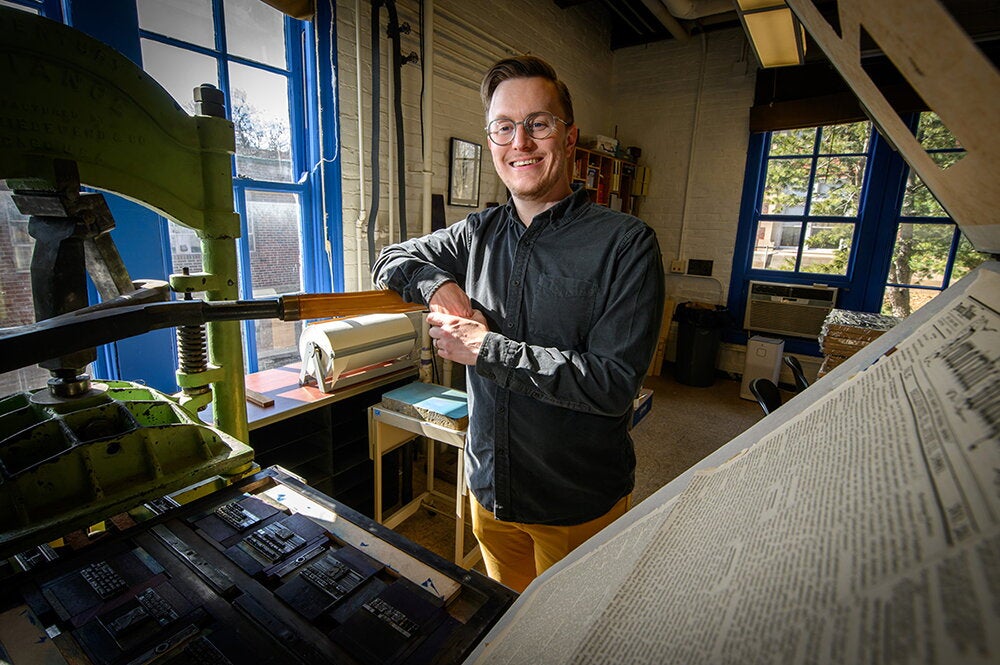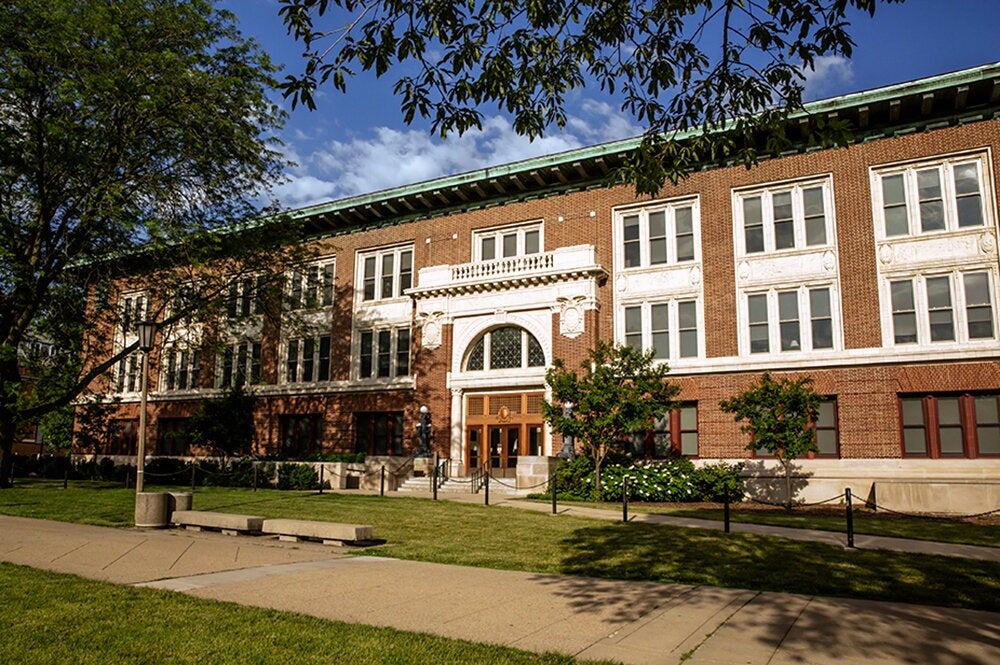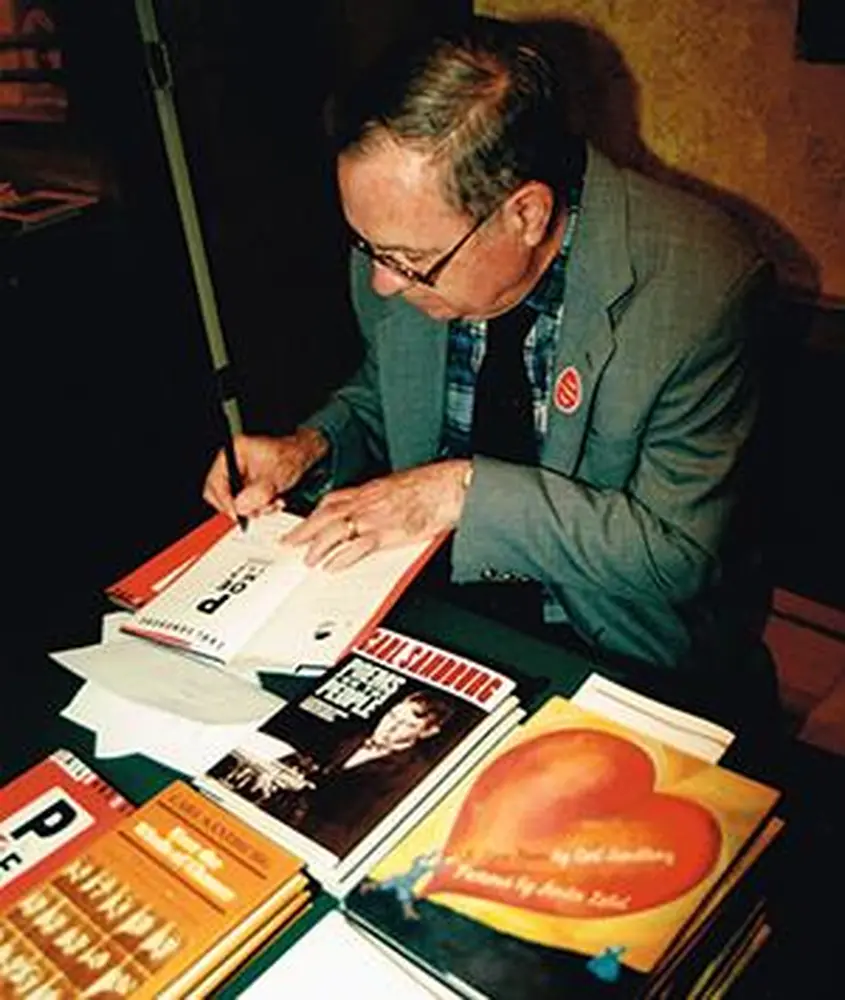
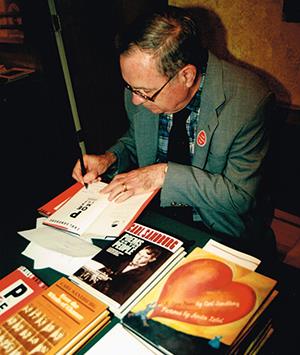
In the summer issue of LAS News magazine, we reported how English professor Bruce Weirick helped obtain the Carl Sandburg papers for the University of Illinois. As it turns out, gaining rights to the great poet’s collection was just the start of the unusual story of how it finally came to be a campus treasure.
As told by George Hendrick, professor emeritus of English who edited several volumes of Sandburg’s poems, next came the delicate task of retrieving the papers from a protective daughter. Carload by carload, this went on for years. Along the way, a meaningful friendship formed.
***
“The Sandburgs lived out of Asheville, N.C., on an estate formerly owned by a man named [Christopher] Memminger, who had been in Jefferson Davis’s cabinet and had been a slave owner. There had been slave cabins. Of course Sandburg wouldn’t have anything to do with that. He renamed the cabins ‘Swedish houses,’ and that’s where he put his secondary books, because they lived in a huge house and there were books everywhere.”
***
“The purchase was made and the University sent down a truck [in 1956] to get papers...but [Sandburg] said that he was working on his autobiography and he needed the papers...[so] he took some University people down and some of the books came. He also sent Lincoln material and some poetry. He sent a smattering.”
***
“And there things stood until he died [in 1967], and then the truck went again. Margaret Sandburg, the eldest daughter, was working on a collection of her father’s early poetry. She said, ‘I’m using a lot of this in my work.’ And so she gave up some things, but still, it was just a small part. Then everything just went quiet.”
***
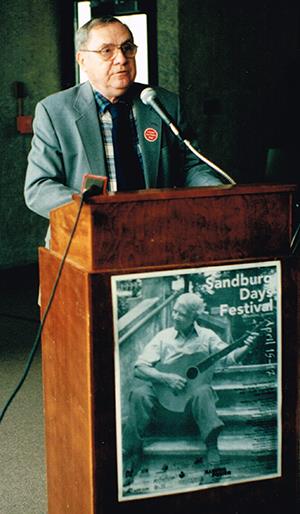
“This all happened before I came [to the U of I in 1967]. I’d been here two or three years and was head of the English department when I had a letter from the associate librarian [Bob Oram] that said, ‘I’ve had a letter from Margaret Sandburg, would you come over and see what you can do?’ Margaret said that that her father’s papers [at the U of I] had not been catalogued and she was very distressed.... Bob and I came up with a plan. I was able to find some money and we brought in a cataloguer who worked for a year getting what we had in order. And then we had a big exhibit in the Rare Book Room and we invited three of Sandburg’s daughters, and the president was there, and there was a dinner.”
***
“I told Margaret [who attended the dinner] that my wife [Willene] was from North Carolina, and that we go down there twice a year to see her parents, and I’d like to stop on the way to see her. She was agreeable, and of course it was always part of my plan that I could bring parts of the collection that she still had. And we did go, and we had a good visit, and Margaret turned loose about five boxes that filled the trunk of our car. This went on for 20 years.”
***
“We would go twice a year and stop at the Sandburgs. Margaret and I became friends.... When she was a small child, just barely entering school, [Margaret] was diagnosed with epilepsy.... She was in middle age before there were drugs to control [it], and she had lived a very isolated life with her mother and father and her sister, Janet, and she saw herself as the keeper of the flame of Sandburg. On the one hand she wanted the papers to come to the University. Her father had signed [rights to the University], but she hated to give up on the papers. They were a tangible sign of her father.”
***
“I would say to Margaret, ‘Well you see there is a file drawer of Lincoln notes. I know you’re not using those in your poetry collection. Could I take them?’ I would go through things like that, to fill up five or six boxes. It’s an unusual way to get a collection.”
***
“I always did a brief inventory of what was in the box, and I discovered that it wasn’t really safe to leave those the night before we left. Once we were getting ready to leave the next morning, and the boxes were taped up, but Margaret during the night remembered that she wanted some things. She came in and opened all the boxes and took out we don’t know exactly what. So I discovered that once I got a box ready, take it to the car.”
***
“[Margaret and I] did a book together (Ever the Winds of Chance). This was the autobiography her father was working on when he wouldn’t give up the papers. The first draft of his autobiography which he didn’t finish was in short hand and he left out all the vowels.”
***
“This went on and on until Margaret died, and Barbara Jones, who was then the rare book librarian, and I flew down and a van came down and we finished the collection. So that’s an indication of how it went. It was a difficult yet pleasant exchange over the years with Margaret.”
***
“The good thing about the Sandburg collection [today] is that it’s here. It’s all in one place. If a scholar wants to come and work on Sandburg, this is the place to come and he doesn’t have to say, ‘Well I’m going to Harvard and Princeton also.’ The massive collection is all here.”

